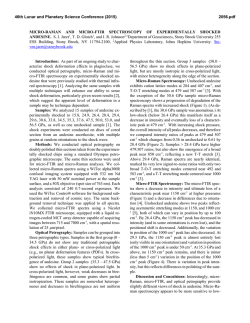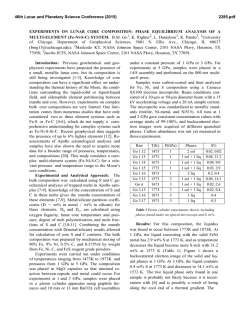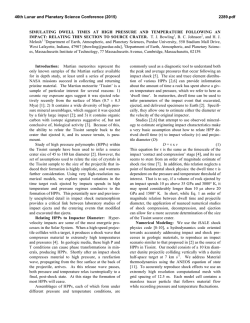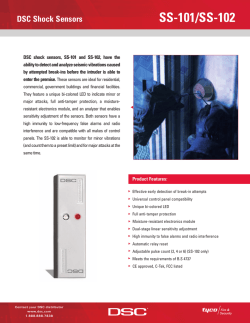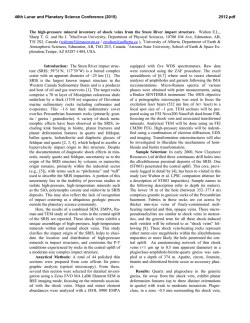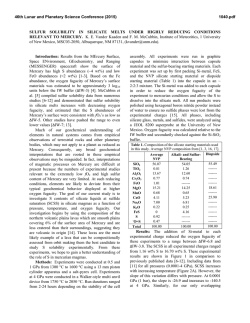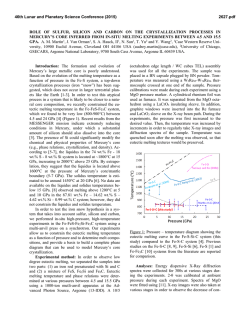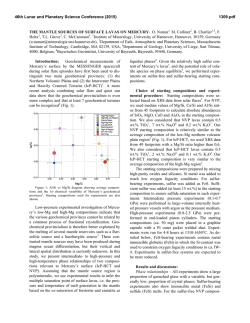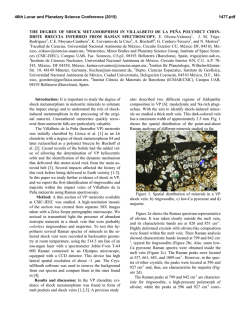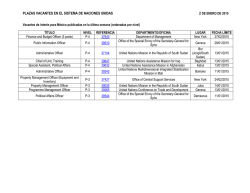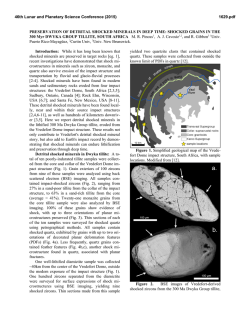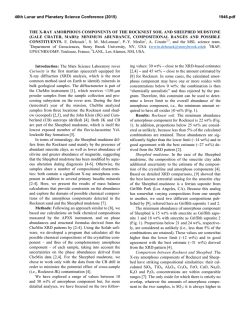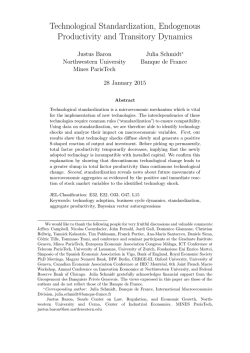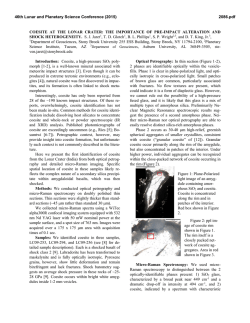
EFFECTS OF SHOCK METAMORPHISM ON THE - USRA
46th Lunar and Planetary Science Conference (2015) 2246.pdf EFFECTS OF SHOCK METAMORPHISM ON THE STRUCTURE OF KAOLINITE. J. R. Michalski1,2, T. G. Sharp3, L. Freidlander4, T. Glotch4, D. Bish5, and M. D. Dyar6, 1Planetary Science Institute, Tucson, Arizona, USA. 2Natural History Museum, London, UK. 3Arizona State University, Tempe, AZ. 4Stony Brook University, Stony Brook, NY. 5Indiana University, Bloomington, IN. 6Mount Holyoke College, South Hadley, MA Introduction: Meteor impact is one of the fundamental geologic processes operating in the Solar System. All ancient surfaces on bodies other than Earth are highly cratered and therefore the minerals composing those surfaces have likely experienced the effects of shock metamorphism to various degrees [1]. Although kaolinite is not a common mineral in the Solar System, kaolinite-group minerals have been detected on Mars using infrared remote sensing in 1000s of deposits [2], all of them relatively ancient. We performed shock experiments on kaolinite in order to understand how shock pressure is linked to structural changes. One of the goals is to understand how shock metamorphism would affect the detectability and characterization of kaolinite on Mars using relevant planetary datasets, such as infrared remote sensing. Methods: Shock experiments were carried using the Flat Plate Accelerator at Johnson Space Center. Six samples of ~200 mg of kaolinite, packed into lowporosity disks, were shocked to six different peak shock pressures: 10.3, 20.0, 25.1, 29.3, 35.6, and 39.6 GPa. The recovered materials were analyzed by transmission electron microscopy (TEM), X-ray diffraction (XRD), mid-infrared attenuated total reflectance spectroscopy (ATR), near-infrared reflectance spectroscopy (NIR), and Mössbauer spectroscopy [3]. Results: TEM data show that the unshocked kaolinite crystals are relatively coarsely crystalline; the starting material (KGa-1) is composed of hexagonal plates ~1-2 µm in diameter and 10s of nm thick (Figure 1). Like the unshocked sample, the 10 GPa shock material is generally composed of large crystals and displays a selected-area electron diffraction (SAED) patterns indicative of well-ordered material. Significant changes are observed at 20 GPa where the material contains domains of amorphous material and domains of relatively undeformed material. This trend continues up to 25, 30, and 36 GPa data where the proportion of highly deformed and disordered material steadily increases. The 40 GPa material is nearly completely amorphous, but even in this highly shocked material, domains of crystalline kaolinite exist (Fig. 1). Other data follow this general trend. The NIR data for unshocked materials exhibit the typical features of kaolinite-group minerals such as a strong AlAlOH doublet feature located at 2.16-2.211 µm (Figure 2). The doublet feature is composed of a 2.166 µm feature and a 2.21 µm feature [4], and it appears that the 2.166 feature is lost at low shock pressures whereas the 2.211 feature persists. The OH-stretching overtone located at 1.41 µm displays complex spectral structure in the unshocked sample and similar character at 10.3 GPa. Progressing through highly shock samples, the spectral structure of the OH overtone decreases gradually until ~30 GPa, where the subtle spectral structure is lost and only a single broad OH absorption is observed. The ATR data are also consistent with these trends. The spectral contrast of the samples greatly decreases with shock pressure, particularly above 20 GPa. This is likely due to the decreased crystallite size. However, at shock pressures ≥20 GPa the AlSiO bands located at ~510 cm-1 and AlAlOH bands located at ~900 cm-1 both become broader and show decreased spectral contrast. SiO stretching bands located at ~1000 cm-1 show the same trend. Most interesting are the OH-stretching fundamentals located at ~3640-3685 cm-1. These absorptions exhibit significant structure in the unshocked samples. With higher shock levels, the spectral structure is lost; the most significant changes occur at 30-35 GPa where the band becomes a single broad absorption. Those trends mirror the trends associated with the OH-stretching overtone located at 1.41 µm in NIR spectra. The XRD results provide further insight into the structure of shocked kaolinite. Change in 001 peak with pressure, minor shift to higher angle (smaller d), increase in breadth.The 001 peak decreases in intensity, increases in breadth, and slightly shifts to higher angle (smaller d) with increasing shock pressure, consistent with a decrease in crystallite size, increase in layer stacking disorder, and possibly partial dehydroxylation. The 02l and 060 regions also show increase breadth consistent with loss of stacking order in all of the shocked samples. Summary and Conclusions: These data show that the structure of kaolinite is relatively unaffected by shock pressures of ~10 GPa [5] (aside from a decrease in layer stacking order). At pressures of ≥20 GPa,, the structure is gradually destroyed, consistent with previous observations of shock-induced changes to other dioctahedral clays [6-8]. In most data, this change is manifested as a gradual increase in the amorphous character of the sample. However, TEM data show that in detail, the materials contain domains of highly disordred material together with domains of relatively crystalline material. With increasing shock pressure, 46th Lunar and Planetary Science Conference (2015) 2246.pdf Figure 1: TEM images and electron diffraction patterns for unshocked kaolinite (a) and kaolinite shocked to 10 (b), 20 (c), 25 (d) 29 (e), 36 (f) and 40 GPa(g). Images show a progressive increase in deformation from hexagonal plates to clumps of randomly oriented fragments and amorphous material. The diffraction patterns show a progression in disorder to a nearly amorphous state at 40 GPa. the number of domains of highly disordered material increases. The NIR results show clear differences between shocked and unshocked kaolinites. Therefore, we propose that it could be possible to detect shocked kaolinite on Mars within materials exhumed by meteor impact. References: [1] French B. M. (1998). LPI Contribution No. 954, Lunar and Planetary Institute, Houston. 120 pp. [2] Carter, J. et al. (2013). JGR Planets, 118, 831–858. [3] Friedlander, L. et al. (in press). Structural and spectroscopic changes to natural nontronite induced by experimental impacts between 10 and 40 GPa, JGR Planets. [4] Bishop, J. L. et al. (2008). Clay Minerals, 43, 35– 54. [5] Gavin, P. et al. (2011). 42nd LPSC, abstract #1921. [6] Boslough, M. B., et al (1980). 11th LPSC XI. P. 2145-2158. [7] Lange, M. A. & T. J. Ahrens (1982). 13th LPSC XIII. P 419-420. [8] Weldon, R. J. et al. (1980). 11th LPSC XI. P. 1234-1235. unshocked AlAlOH 10.3 GPa 20 GPa 25.1 GPa 29.3 GPa 35.6 GPa 39.6 GPa HOH OH 2.2 2.5 1.8 microns Figure 2: NIR spectra of unshocked and shocked kaolinite samples. 1.0 1.4
© Copyright 2025
